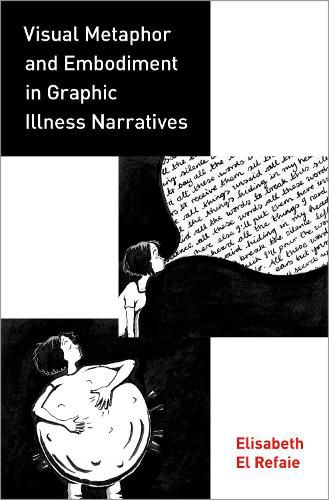Readings Newsletter
Become a Readings Member to make your shopping experience even easier.
Sign in or sign up for free!
You’re not far away from qualifying for FREE standard shipping within Australia
You’ve qualified for FREE standard shipping within Australia
The cart is loading…






Metaphors help us understand abstract concepts, emotions, and social relations through the concrete experience of our own bodies. Conceptual Metaphor Theory (CMT), which dominates the field of contemporary metaphor studies, is centered on this claim. According to this theory, correlations in the way the world is perceived in early childhood (e.g., happy/good is up, understanding is seeing) persist in our conceptual system, influencing our thoughts throughout life at a mostly unconscious level.What happens, though, when ordinary embodied experience is disrupted by illness? In this book, Elisabeth El Refaie explores how metaphors change according to our body’s alteration due to disease. She analyzes visual metaphor in thirty-five graphic illness narratives (book-length stories about disease in the comics medium), re-examining embodiment in traditional CMT and proposing the notion of dynamic embodiment. Building on recent strands of research within CMT and engaging relevant concepts from phenomenology, psychology, semiotics, and media studies, El Refaie demonstrates how the experience of our own bodies is constantly adjusting to changes in our individual states of health, socio-cultural practices, and the modes and media by which we communicate. This fundamentally interdisciplinary work also proposes a novel classification system of visual metaphor, based on a three-way distinction between pictorial, spatial, and stylistic metaphors. This approach will enable readers to advance knowledge and understanding of phenomena involved in shaping our everyday thoughts, interactions, and behavior.
$9.00 standard shipping within Australia
FREE standard shipping within Australia for orders over $100.00
Express & International shipping calculated at checkout
Metaphors help us understand abstract concepts, emotions, and social relations through the concrete experience of our own bodies. Conceptual Metaphor Theory (CMT), which dominates the field of contemporary metaphor studies, is centered on this claim. According to this theory, correlations in the way the world is perceived in early childhood (e.g., happy/good is up, understanding is seeing) persist in our conceptual system, influencing our thoughts throughout life at a mostly unconscious level.What happens, though, when ordinary embodied experience is disrupted by illness? In this book, Elisabeth El Refaie explores how metaphors change according to our body’s alteration due to disease. She analyzes visual metaphor in thirty-five graphic illness narratives (book-length stories about disease in the comics medium), re-examining embodiment in traditional CMT and proposing the notion of dynamic embodiment. Building on recent strands of research within CMT and engaging relevant concepts from phenomenology, psychology, semiotics, and media studies, El Refaie demonstrates how the experience of our own bodies is constantly adjusting to changes in our individual states of health, socio-cultural practices, and the modes and media by which we communicate. This fundamentally interdisciplinary work also proposes a novel classification system of visual metaphor, based on a three-way distinction between pictorial, spatial, and stylistic metaphors. This approach will enable readers to advance knowledge and understanding of phenomena involved in shaping our everyday thoughts, interactions, and behavior.